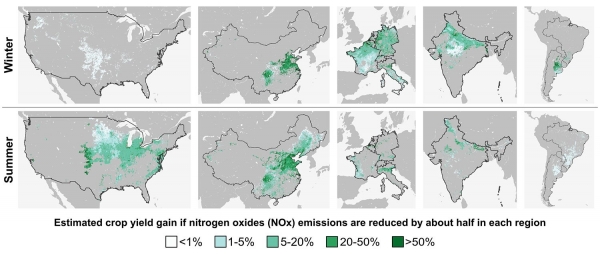Usually, increasing agricultural productivity depends on adding something, such as fertilizer or water. A new Stanford University-led study reveals that removing one thing in particular – a common air pollutant – could lead to dramatic gains in crop yields. The analysis, published June 1 in Science Advances, uses satellite images to reveal for the first time how nitrogen oxides – gases found in car exhaust and industrial emissions – affect crop productivity. Its findings have important implications for increasing agricultural output and analyzing climate change mitigation costs and benefits around the world.
“Nitrogen oxides are invisible to humans, but new satellites have been able to map them with incredibly high precision. Since we can also measure crop production from space, this opened up the chance to rapidly improve our knowledge of how these gases affect agriculture in different regions,” said study lead author David Lobell, the Gloria and Richard Kushel Director of Stanford’s Center on Food Security and the Environment.
Nitrogen oxides, or NOx, are among the most widely emitted pollutants in the world. These gases can directly damage crop cells and indirectly affect them through their role as precursors to formation of ozone, an airborne toxin known to reduce crop yields, and particulate matter aerosols that can absorb and scatter sunlight away from crops.
Continue reading at Stanford University
Image via Stanford University


